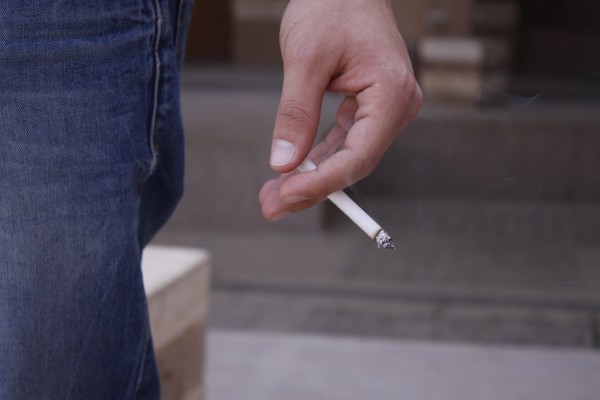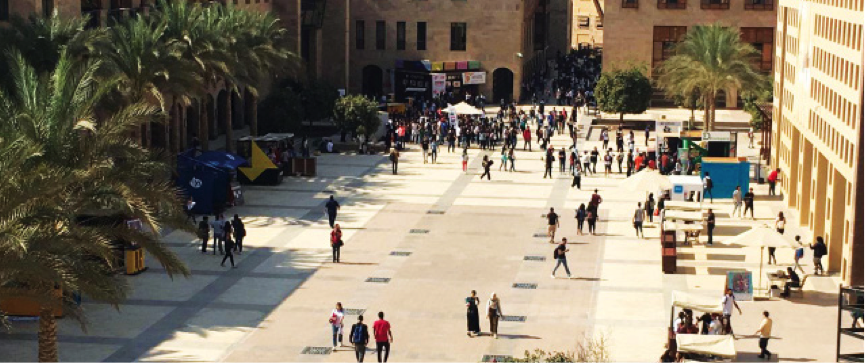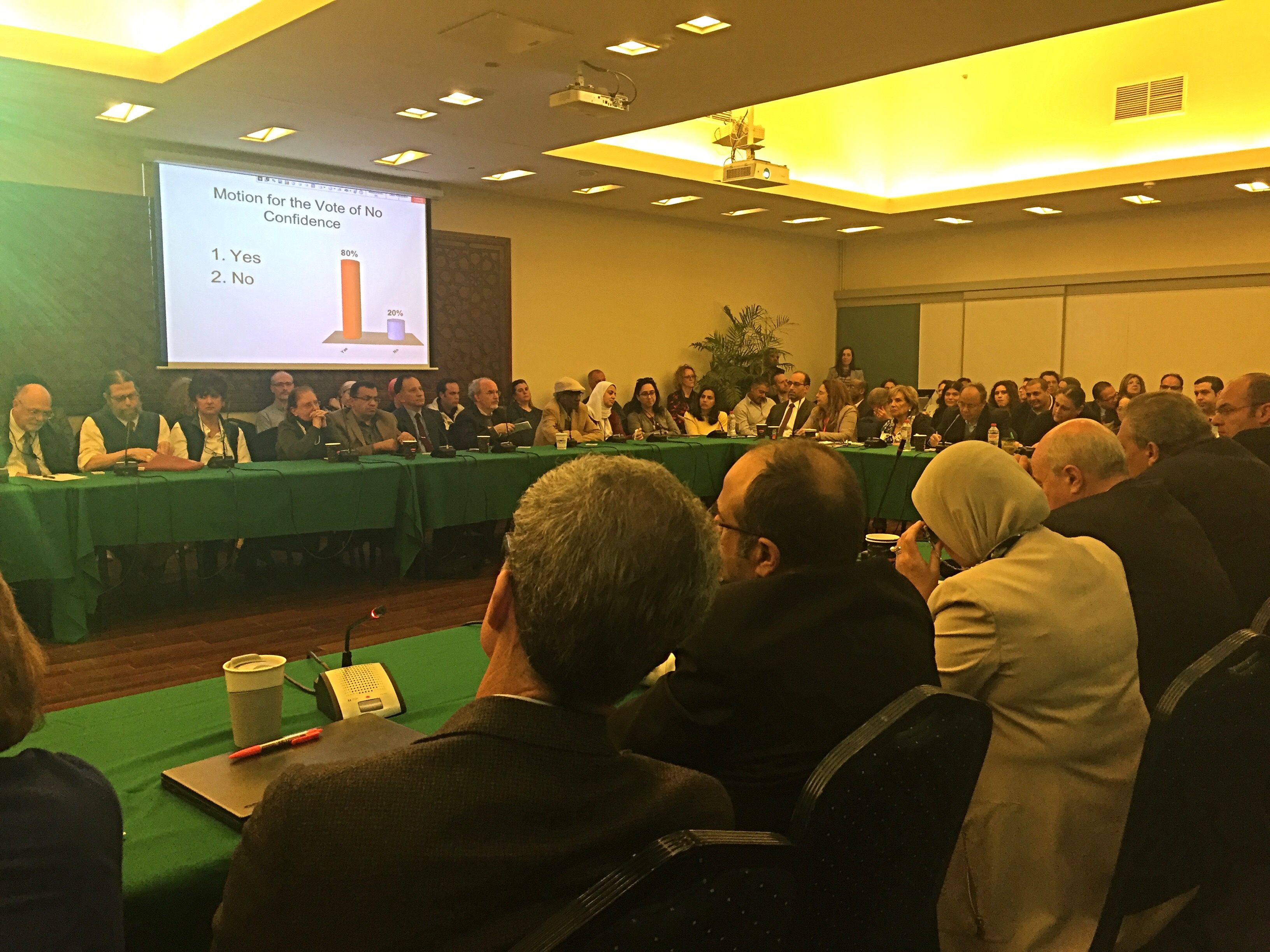Senate Allocates Smoking Zones
Since the publishing of this article, Caravan staff have located two more signs as described below
BY FARIDA ABDEL MALEK and MALAK ABDELNABI
@FARIDAKA95 @MALAKSABDELNABI
![There has been no mention of how the new smoking policy will be monitored or enforced [Suhayla Al Sheikh]](http://www.auccaravan.com/wp-content/uploads/2016/03/Smoking-on-campus-e1458517474377.jpg)
The Caravan has found only one new “Smoking Strictly Prohibited” sign, meant to demarcate smoke-free zones on campus, although the Office of the Executive Vice President insists that they have been installed in all the “planned locations”.
The signs come as a result of the revised smoking policy which designates areas on campus where students, faculty and staff can and cannot smoke.
It falls short, however, of outlining punitive measures against violators – a shortcoming that non-smokers like literature senior Adel Hoza believe undermines its success.
“For them to stop smoking, I think the problem is the policy is not enforced enough for them not to smoke in public places, they still smoke everywhere,” he said.
But many students approached by The Caravan said that they had received notification of the new policy through email and believed it to be a good idea.
Only a handful said they were still confused as to the tenets of the new policy.
Last semester, a ‘Smoking Policy Committee’ was formed in order to find solutions to the complaints raised by non-smokers – mainly about their right to breathe smoke-free air, especially in enclosed spaces.
“Last semester, I received a complaint from a student who was sitting in the food court, and complained about the heavy smoking in the food court and his right to smell healthy air,” said Riham Mahmoud, director of environmental health and safety.
Executive Vice-President for Administration and Finance Brian MacDougall said “the first objective is to raise awareness as to how harmful smoking is to individuals, those who smoke and those who don’t smoke”.
MacDougall added that because faculty and staff also smoke in the wrong places, the new policy addresses the entire AUC community.
“The aim of this policy is to make our university free of smoking,” said Dr. Mohamed Amin, Director of Medical Services.
The new policy provides ‘Preferred Smoking Locations’ including all building rooftops, large outdoor areas like the back area of Cilantro, as well as bus terminals and many more places.
A map of the campus pinpointing 10 preferred smoking areas will be available. In these ‘smoke zones’ the university will place new ashtrays and seating.
Locations where smoking is strictly prohibited include the AUC Center for the Arts plaza, the TBS area in HUSS, the food court and many other areas.
“That’s what should have happened from the beginning,” says Mohamed Ghazy, an economics senior and smoker.
But he doesn’t think students will abide by the new policy.
Chemistry sophomore Haya Shash says she has heard of the new policy, but appeared ambivalent.
“Honestly if I’m standing in a place where I’m not supposed to smoke, I’m going to smoke anyway, but if someone tells me not to, then I won’t,” she said.
David Leathers, who works in MacDougall’s office, said “if members of the community want a [Smoking Strictly Prohibited] sign in a new location, they can contact the Environmental Health and Safety office for suggestions of new places,” where they should be installed.




